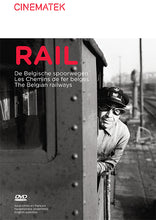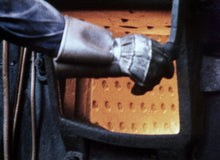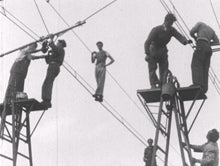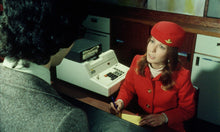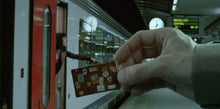
When the first train travelled from Brussels to Mechelen in 1835 history changed up a gear. The 'iron way' was the offspring of coal and steel, born of a technological imagination that would also lead to the invention of 'cinematography' at the turn of the 20th century. Trains appeared in films very early and the moving image recorded the fundamental changes that the 'iron way' would lead to. Not only the trains and stations evolved but also the people and society around them. Twelve archive films illustrate this and lots of other stories from the history of the Belgian railways. With text and context, railway journalist Herman Welter guides the viewer through the films.
CONTENU
Along the tracks (Charles Dekeukeleire, 1952, 22'59'')
Charles Dekeukeleire is one of the big names in the history of the Belgian documentary. His films are notable for their remarkable cinematographic qualities, among other things. In this commissioned film from 1952 he shows us some of the multitude of activities that occur within the national railway company. We travel by rail through beautiful Belgian countryside and are given an often surprising glimpse behind the scenes. An awful lot is involved in making trains run as they should and on time.
50 years of SNCB (Anoniem, 1976, 27'42'')
Between 1926, the year in which the SNCB was set up, and 1976 the railways underwent a fundamental evolution. In this corporate video the many aspects of the complicated organisation are explained: technology, infrastructure, training, new initiatives and customer-related measures.
The SNCB Group (Eric Figon, 2009, 06'00'')
The objective of this corporate video is to introduce the many activities of the Belgian Railways. Founded in 2005 the SNCB-Group is composed of three separate entities: SNCB-Holding, Infrabel and the SNCB.
1835-2010: The Train's Odyssey (Eric Figon, 2010, 06'05'')
In 2010 the Belgian Railways celebrate their 175th anniversary. This short film recounts the landmark events that have made the history of the railways so exciting, from the very first steam locomotive to the high-speed train.
The Steam Era (Raf Haentjes, 1966, 18'37'')
Homage to the era of the steam and to the personnel that operated the steam locomotives. A train driver and stoker's working day carefully reconstructed.
Major repair to a type 64 locomotive (J. Vits, 1939, 08'20")
The Central Workshop, one of the SNCB's most important workshops, is to be found next to Mechelen's main station. A steam train is being completely overhauled.
Electrification of the Brussels - Charleroi line (J. Vits, 1949, 05'29")
The Brussels - Charleroi line is electrified. It is the first railway line that the SNCB converts after the Second World War. Railway workers become steeplejacks with acrobatic skills. Their activities produce some breathtaking images.
Sabotage (Jacques Kupissonoff, 1945, 13'50'')
The Second World War is a black page in the history of the Belgian national railways. The company was taken over by the German occupiers and 'trains of death' transported victims of the regime to concentration camps. In this documentary from 1945 filmmaker Jacques Kupissonoff reconstructs the activities of 'Group G' that specialised in the sabotage of the railway network during the Second World War. The film includes exclusive images of wrecked railway infrastructure.
Railways and stations inside a hill (Pierre Bourgeois, 1952, 05'23'')
Unique images of the construction of the North-South Junction and of two stations (Congrès and Central) inside Brussels' hill. The oldest films date from the beginning of 1940. The 'Jonction' fundamentally altered the appearance of the city of Brussels.
Manned and unmanned level crossing (Charles Kerremans, <1965, 01'46'')
Didactic film from the 1960s explaining to the viewer how to cross safely at a level crossing.
Railways in the news (1919-1966, 15'49'')
Compilation of news items from old cinema newsreels and a number of excerpts from documentary films: the setting up of La Société Belgo-Anglaise des Ferry Boats SA, the Belgian-British ferry company, in 1924, Queen Astrid's coffin arriving by train at Brussels North in 1935, substantial damage to the infrastructure after the First and Second World Wars, the rebuilding of the railway network after the Second World War, the decades of work to the North-South Junction, the last steam train in 1966.
Railway commercials (1959-2010, 13'13'')
A selection of 14 commercials with which the Belgian railway company has tried to interest the public in the train in the past 50 years: the luxurious Trans Europ Express (TEE), the car sleeper trains to ski slopes and sunny beaches, the IC/IR service, the Go-pass tickets. There were even some about the environment and getting a job with the railways.
DVD: 145 min.
Languages: French, Dutch
Subtitles: English, French, Dutch
Regional code: PAL (region free)












